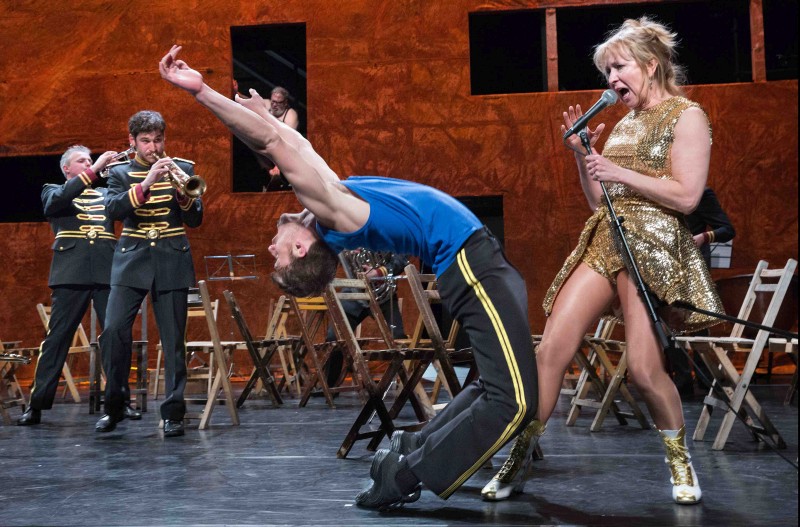 En Avant, Marche! had me at ‘Hello’. A portly, grey haired man shuffles onstage holding a portable CD player. He wanders offstage and pulls in an extension cable, plugs in his CD player, skips to the right track, takes a pair of cymbals, and prepares to join in at the right moment. The anticipation is immense. The gentle humour beautifully human. But it takes too long – he puts his cymbals down and skips through the track to hurry the process up. When he finally arrives at the right moment he lovingly beats his drum. The joy, passion, and pathos rings through those cymbals.
En Avant, Marche! had me at ‘Hello’. A portly, grey haired man shuffles onstage holding a portable CD player. He wanders offstage and pulls in an extension cable, plugs in his CD player, skips to the right track, takes a pair of cymbals, and prepares to join in at the right moment. The anticipation is immense. The gentle humour beautifully human. But it takes too long – he puts his cymbals down and skips through the track to hurry the process up. When he finally arrives at the right moment he lovingly beats his drum. The joy, passion, and pathos rings through those cymbals.
The entire performance hums with this humanity. The man, played with utter conviction by Wim Opbrouck, is ill. A white bandage below his neck means that he can no longer play the trombone; he can no longer march with his band. We follow Opbrouck as he summons musicians from a marching band to the stage to replay his beloved pieces of Beethoven, Verdi, and Strauss. But there are many empty chairs – the vacant lots of people who have already disappeared from the group. In a wonderful moment, all of the chairs become occupied by the fully-uniformed local Dalkeith and Monktonhall Brass Band. The thirty-strong band join with the company’s musicians, moving in slow motion through the maze of chairs to find their place. It’s like a sea of never-ending hope. And when they play it is sublime. Opbrouck races through them all after their first number, galvanized by the passionate playing. He asks a few of them what they do for a living – an IT consultant, a civil servant, a cake-maker and a solicitor all form part of this evening’s band; all coming together to give us this divine music, and give Opbrouck one final march.
Dancer Hendrik Lebon flings himself across the stage as he embodies the younger incarnation of Opbrouck’s aging character, with a passion and zest for life, love, and music that is utterly exhilarating. There is a thrilling sequence when he and drummer Witse Lemmons roll around on the stage, thrashing into each other but never stopping the rhythmical drumming, whether it’s on each others shoes, stray microphone stands, or the wooden floor. Two glamorous blonde women in their 60s portray Opbrouck’s lovers. Dressed in gold sequins their baton-twirling is magnificent (and again full of pathos). Their zest for life slowly gives way to their fear of losing him, their utter despair ringing through the auditorium just as vividly as a lone trumpet howling to the moon. Directors Frank Van Laeke and Alain Plaitel have taken the metaphor of a marching band as a community and created a moving and life-affirming performance that fizzes with heartbreaking moments and hilarious insights into a life passing by.
